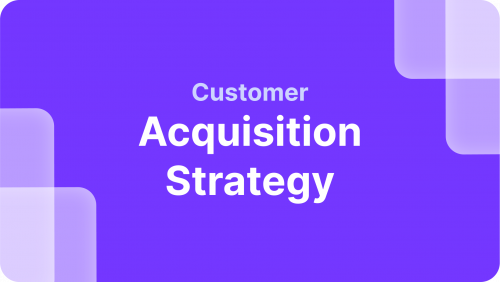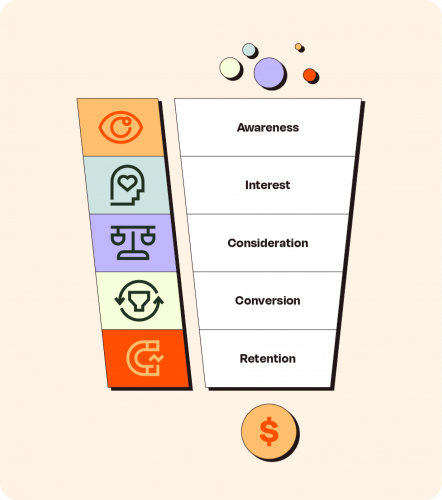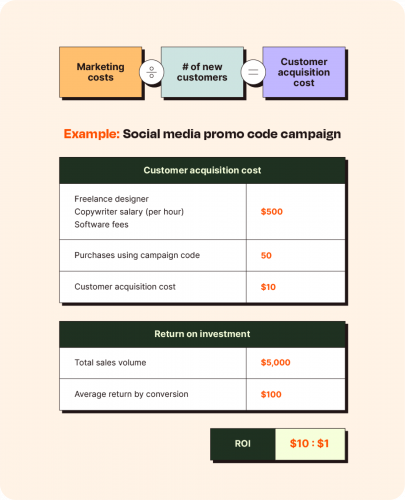How to Create Customer Acquisition Strategy as a Forex Broker

The foreign exchange market is a dynamic and lucrative space. However, for Forex brokers, attracting new traders in a crowded marketplace requires a strategic approach. A well-defined customer acquisition strategy is the cornerstone of sustainable growth in the Forex industry.
This guide will equip you with the knowledge and tools to craft a winning strategy that attracts high-quality leads and converts them into loyal customers for your Forex brokerage.
Key Takeaways
- Define your ideal customer profile and understand their trading goals and needs.
- Develop a Forex marketing strategy that leverages content marketing, social media, targeted advertising, and strategic partnerships.
- Prioritise customer education and build trust by offering valuable resources and fostering a supportive community.
The Importance of a Customer Acquisition Strategy

A customer acquisition strategy is a systematic approach to attracting new clients to your business. For Forex brokers, this involves not just bringing in traders but also ensuring their long-term engagement and satisfaction. The right strategy can significantly impact your bottom line, helping you build a loyal customer base and grow your business sustainably.
In the Forex market, where competition is fierce, having a clear and effective strategy is more important than ever. With the right approach, you can differentiate yourself from competitors, build trust with potential clients, and convert them into long-term traders.
Key Components for Success

To develop a successful customer acquisition strategy, Forex brokers should focus on the following key components:
Market Research and Segmentation
Understanding your target audience is the foundation of any successful acquisition strategy. Conduct thorough market research to identify potential traders’ needs, preferences, and pain points.
Segment your audience based on trading experience, geographical location, and investment goals. This segmentation allows you to tailor your marketing messages and offers to resonate with specific groups, increasing the likelihood of conversion.
Before diving into specific tactics, it’s crucial to understand who you’re trying to reach. Developing a detailed ideal customer profile (ICP) is the first step. This profile should consider factors like:
- Experience level: Are you targeting seasoned traders or beginners?
- Trading goals: What are their financial aspirations? Do they seek short-term gains or long-term portfolio diversification?
- Preferred trading style: Day trading, scalping, or swing trading?
- Geographical location: Where are your target customers located?
Understanding these details allows you to tailor your messaging and marketing efforts to resonate with your ideal audience.
Value Proposition and Differentiation
In a competitive market, having a unique value proposition is essential. Identify what sets your brokerage apart from others – whether it’s lower fees, advanced trading tools, superior customer support, or educational resources. Communicate this value proposition in all your marketing efforts to attract traders seeking the benefits you offer.
Multi-Channel Marketing
A diversified marketing approach is crucial for reaching potential clients across different platforms. Utilise a mix of digital marketing channels. Your Forex broker marketing plan should outline the tactics and channels you will use to attract and retain already existing customers. This plan should include both online and offline marketing strategies, such as:
1. Content Marketing
Content marketing is a powerful tool for attracting new Forex traders. Create valuable content that educates and informs your audience, positioning your brand as an authority in the Forex market.
- Offer informative articles, e-books, and video tutorials on various Forex trading industry topics, from fundamental analysis to technical indicators. This establishes your expertise and positions you as a trusted resource for potential clients.
- Provide regular market updates, currency forecasts, and educational webinars led by experienced traders. This demonstrates your commitment to client success and keeps them engaged with your brand.
- Cater to different learning styles by offering a mix of written content, infographics, interactive quizzes, and educational podcasts.
Remember, the tone of your content is the voice of your brokerage.
2. Search Engine Optimisation (SEO)
A strong online presence is critical for attracting new Forex traders. Optimise your website and content to rank higher on search engines, making it easier for potential customers to find you.
Ensure your website ranks prominently in search results for relevant keywords like “Forex trading for beginners” or “best Forex broker for scalping.” Implement keyword research tools and on-page optimisation techniques to improve your website’s search engine visibility.
3. Social Media Marketing
Use social media platforms to communicate with potential clients and promote your services. Engage with them on LinkedIn, Twitter, Reddit, Instagram and Facebook platforms. Share valuable content, such as market analysis, trading tips, and webinars, to build trust and establish your brokerage as an industry authority. Participate in industry discussions and build a community around your brand.
4. Email Marketing
Develop targeted email campaigns to promote leads and convert them into clients. Personalise your emails based on the recipient’s trading experience and interests to increase engagement.
For example, Amazon’s behavioral emails are good customer acquisition strategy examples. After a Kindle purchase, they send a follow-up message encouraging a product review, expressing appreciation, and strategically drawing the customer back into the Amazon ecosystem. This clever tactic can seamlessly reconnect the customer with your platform, encouraging further engagement.
5. Targeted Advertising Strategies
Consider paid advertising options like search engine marketing (SEM) and social media advertising to reach a wider audience. Utilise targeting features to ensure your ads reach users interested in Forex trading.
6. Referral Programs and Partnerships
Leverage the power of word-of-mouth by implementing a referral program. Encourage your existing clients to refer new traders by offering incentives such as bonuses, discounts, or commission rebates. Additionally, explore partnerships with trading educators, financial bloggers, and industry influencers who can help promote your brokerage to their audience.
Combining these tactics allows you to create a successful marketing strategy that effectively drives customer acquisition.
Conversion Rate Optimisation (CRO)
Attracting traffic to your website is only half the battle; you must also convert visitors into clients. CRO involves optimising your website’s design, content, and user experience to increase the percentage of visitors who take the desired action, such as signing up for an account or depositing.
Consider enhancing conversion rates using clear calls-to-action, easy navigation, and trust signals (e.g., client testimonials, success stories, and regulatory information).

Fast Fact
A business’ CAC (customer acquisition cost) is calculated by dividing all sales and marketing costs by the number of New Customers gained within a specific period. A simple example would be if Tommy spent $10 to market his lemonade stand and got ten people to buy his product in 1 week, his cost of acquisition for that week is $1.00.
B2B Customer Acquisition Strategies
For brokers targeting institutional clients or business partners, a B2B customer acquisition strategy is equally important. This involves building relationships with other financial institutions, liquidity providers, and white-label partners.
B2B strategies often require a different approach from B2C, focusing on building long-term relationships and providing value.
Personalised Outreach
In B2B marketing, personalisation is key. Tailor your communication to address the specific needs and challenges of each potential business client. Use data and insights to craft personalised messages demonstrating how your brokerage can help them achieve their goals.
Building a Strong Online Presence
Your online presence is crucial in B2B marketing. Ensure your website is professional, informative, and easy to navigate. Consider creating a customer acquisition strategy template that outlines your approach to attracting and converting business clients.
Networking and Industry Events
To network with potential business clients, participate in industry events, conferences, and trade shows. Building face-to-face relationships can be more impactful than online communication and lead to valuable partnerships.
Integrating Customer Acquisition and Retention Strategies
While acquiring new clients is important, retaining them is equally crucial for long-term success. Customer acquisition and retention strategies should be integrated to ensure a seamless client journey from the first interaction to long-term loyalty.
Onboarding Process
A smooth and supportive onboarding process is critical for retaining new clients. Provide comprehensive training and resources to help them get started with your platform.
Ongoing Support and Communication
Keep the lines of communication open with your clients. Regularly check in to address any issues they might have and offer personalised support. Providing ongoing value through educational content, market insights, and personalised recommendations can help retain clients.
Loyalty Programs
Implement loyalty programs that reward clients for their continued business. This could include tiered benefits, exclusive offers, or cashback incentives for high-volume traders. Such programs can encourage long-term loyalty and increase the lifetime value of each client.
Measuring and Optimising Your Strategy

Tracking and measuring its performance is essential to ensure your customer acquisition strategy is effective. Key performance indicators (KPIs) to consider include:
- Website traffic (website visits, bounce rate, and time on site)
- Lead generation (number of leads generated through your marketing efforts)
- Conversion rate (percentage of leads that convert into paying customers)
- CAC – Customer acquisition cost (cost of acquiring a new customer)
- CLTV – Customer lifetime value (total revenue a customer will generate over their lifetime)
Use analytics tools to monitor the performance of your marketing campaigns and identify areas for improvement. Regularly review and adjust your strategy based on data-driven insights to ensure continuous growth.
Conclusion
Creating a customer acquisition strategy as a Forex broker requires market research, targeted marketing, and continuous optimisation. By understanding your audience, differentiating your brokerage, and utilising multiple marketing channels, you can attract new traders, build a loyal customer base, and drive sustainable growth in your Forex business.
Remember to regularly analyse your strategy’s performance and adapt to changing market conditions to stay ahead of the competition.


